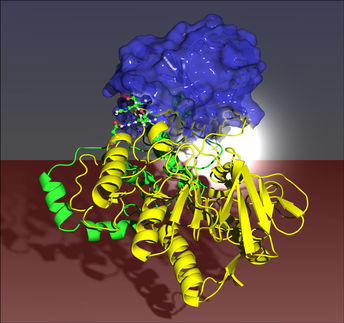Environmental significance of chiral persistent organic pollutants
Enantioselectivity has been recognized in the fields of life science, pharmacology, modern medicine, and chemistry. The increasing release of chiral persistent organic pollutants (POPs) into the environment in recent decades has led to an increase in scientific research into their environmental behavior and safety. Scientist Weiping Liu and his colleagues at Zhejiang University have been studying enantiomer-specific effects of chiral pollutants for a long time, and have recently reviewed the enantiomer-specific environmental transportation, transformation, bioaccumulation, and toxic effects of chiral POPs. This work was published in Science China Chemistry (in Chinese) in 2013.
More and more chiral POPs have emerged as industry has developed. Studying only racemic POPs will lead to overestimations and underestimations of their ecological safety and potential to cause health risks. This is because, although the enantiomers of a molecule have the same chemical properties, they can interact with enzymes in different ways. The enantiomeric ratio (ER) and the enantiomeric fraction (EF) are often used to identify the sources of, and the effects of microbial degradation on, chiral chemicals in the environment. These parameters can also be used to trace the migration of chiral substances through the environment and the transformation processes that have acted upon them. EF values for chiral POPs in environmental matrixes commonly decrease in the order soil > water >air. The EF values of chiral POPs are also often altered in organisms, and the biggest EF deviations (from the values found in the wider environment) in animals have been found in brain tissue, followed by liver tissue, with greater deviations in animals at high trophic levels than at low trophic levels. This may be related to enantiomer-specific biological processes, such as uptake and degradation, and the enzymes involved in the transformation of POPs in organisms. Chiral POPs show enantiomer-specific toxicity (both acute and chronic, and including endocrine disruption effects), which may also be caused by the different ways enantiomers interact with enzymes. Regulating authorities may not, therefore, get a true picture of the risks and effects of POPs if they do not consider changes in the ERs or EFs in the environment and biota and the individual toxicities of the enantiomers.
In this paper, the environmental significance of chiral POPs as tracers, identifying their residue characteristics and sources, is shown. It is recommended that a database is developed for assessing the environmental risks posed by chiral POPs to non-target organisms, based on individual enantiomer concentrations. The current state of the science of chiral POPs is summarized in the paper, and it will provide a valuable basis for the future study of chiral POPs.
Most read news
Organizations
Other news from the department science

Get the chemical industry in your inbox
From now on, don't miss a thing: Our newsletter for the chemical industry, analytics, lab technology and process engineering brings you up to date every Tuesday and Thursday. The latest industry news, product highlights and innovations - compact and easy to understand in your inbox. Researched by us so you don't have to.





























































